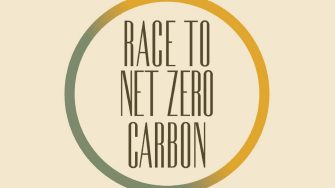
Problem Statement
The climate emergency is one of the biggest challenges of our time. Increasing concentrations of greenhouse gases in the atmosphere have already raised the earth’s average temperature around 1.1°C when compared to the pre-industrial era. This has increased the severity and frequency of extreme weather events which are having a catastrophic impact on people and communities. The latest IPCC Reports therefore point towards urgent action and achieving significant gains in net zero carbon by 2030.
Built environment is a key candidate for both levels of carbon emissions and opportunities for innovations. These include advanced, researched knowledge, emerging technologies and practical applications that enable to deliver change towards net zero carbon 2030. The High Performance Architecture (HPA) team has recently completed the Australian Guide for Net Zero Carbon Buildings 2030 and an accompanying book is due later this year. These build on long term research and innovation at UNSW’s School of Built Environment. The HPA research cluster can claim world class team and research to impact in this area. It has leadership of:
- CRC for Low Carbon Living: 2012-2019
- NSW Decarbonisation Innovation Hub
- Australian Trailblazer for Recycling and Clean Energy
Solutions
HPA research, leadership and innovation related to net zero carbon buildings and communities is extensive, and covers the following specific areas:
- Building and community energy diagnostics
- Numerical and experimental surveys on energy and environmental quality of buildings and communities
- Energy ranking and labelling
- Energy conservation technologies
- Technologies to improve indoor environmental quality
- Integrated energy and environmental design of buildings and communities
- Efficient use of renewable sources in buildings and communities
- Advanced control and management systems
- Optimization procedures for near zero or positive energy buildings and communities
- Real case studies and implementation
- Post occupancy evaluation
Projects
- NSW Decarbonisation Innovation Hub (2022-2031)
- Australian Trailblazer for Recycling and Clean Energy (2022-2026)
- Race to Net Zero Carbon: A climate emergency guide for new and existing buildings in Australia (2022)
- NABERS embodied carbon initiative – technical analysis (2022)
- Designing prefabricated timber POD for optimal indoor environmental performance and user comfort (2022)
- Study on the Cool Roofs Mitigation Potential in Australia (2021)
- Building energy efficiency in commercial buildings (2021)
- Modelling ambitious climate mitigation pathways for Australia's built environment (2021)
- Smart community pilot study (2021)
- Nanotechnology-based thermochromic materials for adaptive building envelopes (2021)
- Guide to low carbon commercial buildings – new build (2019)
- Guide to low carbon commercial buildings – retrofit (2019)
- Guide to low carbon residential buildings – retrofit (2019)
- Energy efficiency in social housing (2019)
- Mapping the decision-making processes to identify barriers and drivers to meet or exceed the BASIX requirements of new builds (2019)
- Advanced hybrid ventilation systems for schools (2019)
- Validating and improving the BASIX energy assessment tool for low-carbon dwellings - phase 2 (2018)
- Validating and improving the BASIX energy assessment tool for low-carbon dwellings (2017)
- Closing the Loop (2016)
